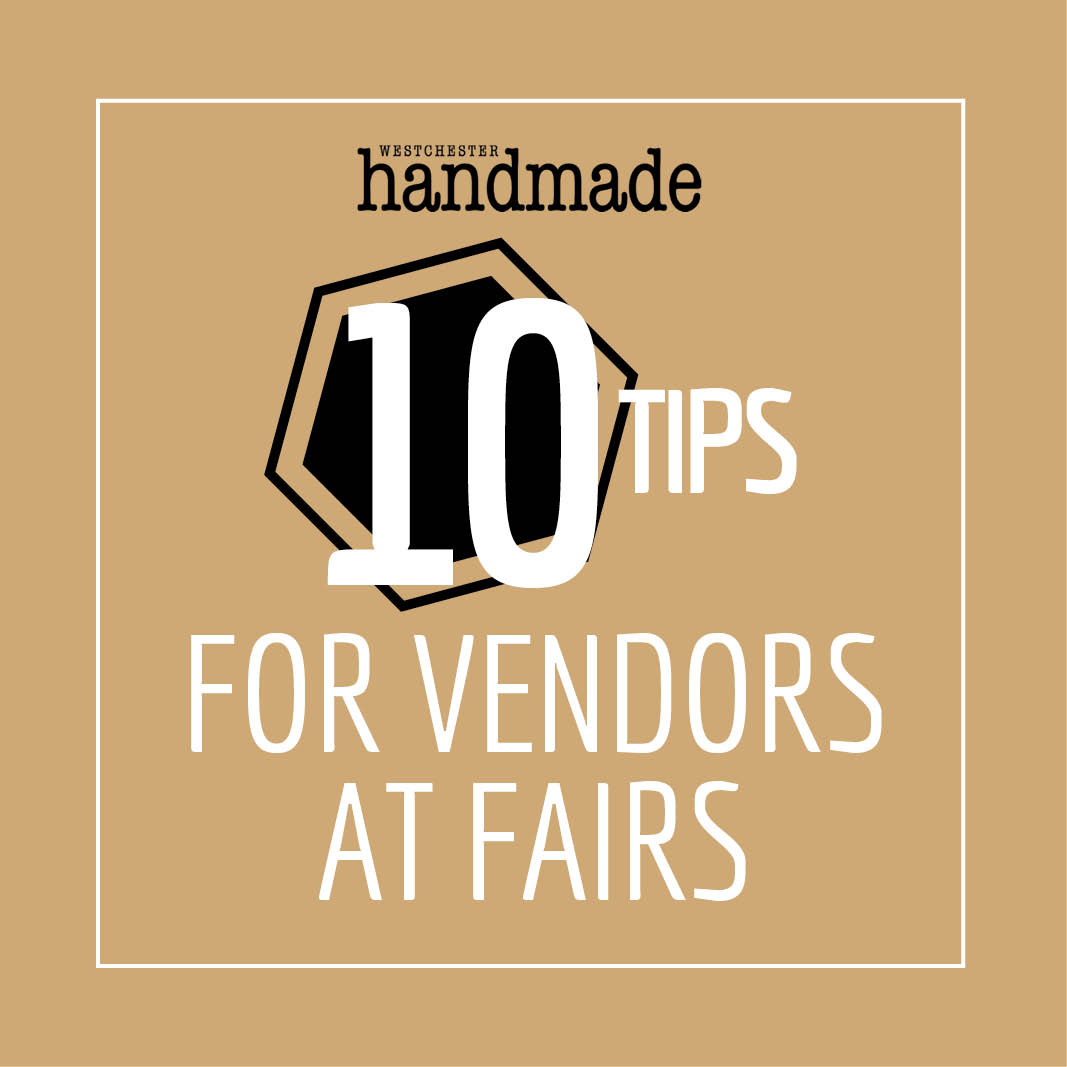Whether you are new to vending or a veteran, remembering all the little things that can make a great customer AND vending experience can be a lot to remember, especially during the busy holiday season. Using these tips and other adjustments that best fit your product, set you up for better chance of a sale.
And use our Square referral link and receive free processing on up to $1,000 in sales.
Sound off on the comments section about some of your favorite tips!

Consider the location of your table or booth.
Contact the organizer as soon as your spot is confirmed. Find out if you will be next to complimentary vendors, the type of lighting that will be available to you, and the proximity to an outlet or electrical source (if needed). It doesn’t hurt to ask the organizer BEFORE the show what is the best spot for you with regard to your items, especially if you have a display floor rack. Once the show has started it will be harder to move you and the organizer won’t be happy making last minute adjustments on the fly.

Make branding and styling a priority.
Make sure to have a banner with your logo, descriptive tagline, and website. All pricing signage should be clearly visible and legible for customers with consistent branding. Provide branded shopping bags, which can be just a sticker or stamp added to generic bags. You want to make sure people can tell it’s YOUR brand and can easily remember your store. Banners can get damaged, soiled or maybe the design is dated. Prep in advance to ensure your materials come in on time or to avoid rush fees. Usually October is a good time to access what you will need for the upcoming season.

Promote the Event
Although you often have to pay a fee to participate, it’s also your responsibility to let potential customers know about the fair. Invite people close to the venue know about it. Sharing the event invite and flyer on social media or around town. Let your customers know via newsletter about the upcoming fairs you are participating in. Post images and video during the event should others nearby see it and want to stop in, especially if it’s a multi-day event.

Maximize the full space available to you.
Just because you are limited by floor or table space you are usually not limited by height. It’s also sometimes an option to extend in front of your table. Use EVERY bit of space allowed--you pay for it! Make sure that everything is easy to grab and view. Showcasing options are great for customers to see, even if it means having duplicate items on your table. Invest in some display items. Getting a few quality displays really can help bring the whole look together. Try garage sales or second-hand stores for some cheaper alternatives. Or if you can’t purchase items, then make some of your own. Upcycle a wine box or fruit crate; they are usually free and incredibly versatile.

Bring items appropriate for the fair.
Choosing which items to bring can be daunting. Take a look at the roster of vendors or who may attend the fair. Ask the organizers if they can give you some insight into what the average price point is and what types of items are most popular in your category. Make sure to also bring enough stock and add items as they sell.

Be ready for all sales!
Cash is still King! So make sure that you have plenty of change. But don’t lose sales because you don’t take cards. Using Square or another mobile credit card payment system, make sure your items are in your system and to add in appropriate sales tax. If you only sell at craft markets, you don’t have to include prices in your item listing unless you make it available on the online store, that way you can adjust pricing on the fly but keep track of what items sold. Use our referral link, and receive free processing on up to $1,000 in sales.

Look attentive!
Sometimes the long days or slow sales zaps your energy to provide the same attentiveness to each person that walks by. You don’t have to necessarily stand the whole time but you want to make sure people know that you are ready for a sale. Just saying “hello” or Happy Holidays” can get the customer’s attention without you feeling like you’re coming on strong or desperate for a sale. Customers should feel welcome to touch your wares and engage in conversation with you.

Take a lap around the venue.
Besides meeting other vendors, study how things are laid out and what is and isn’t working for other vendors. Educate yourself with every fair to see what can work better for you next time. Usually at the beginning of the fair is the best time to go since it tends to be the slowest time. At the end of the fair, the tables may look different as the vendors sell off their wares.

Make sure potential buyers can find you after the fair.
Sometimes customers are gathering ideas and may not purchase right away from you. Have business cards or postcards with your contact info and website where they can buy from you later. Let them know that they can purchase from you online or maybe at another upcoming fair. And with every sale you make, include your card in the shopping bag. Having a newsletter sign-up sheet is also great way to follow up with potential customers! Using their email, you can potentially offer a special discount for those interested in your products and turn them into customers.

Have fun!
Try not to constantly ask how are sales for other vendors and compare yourself. Constant complaining creates a negative vibe and customers can feel it. Making it a fun experience leaves a good impression on the customer, even if they don’t buy from you. And the other vendors will appreciate your encouragement too! Sometimes encouragement comes in a bottle of red wine that you sneak in 😉



